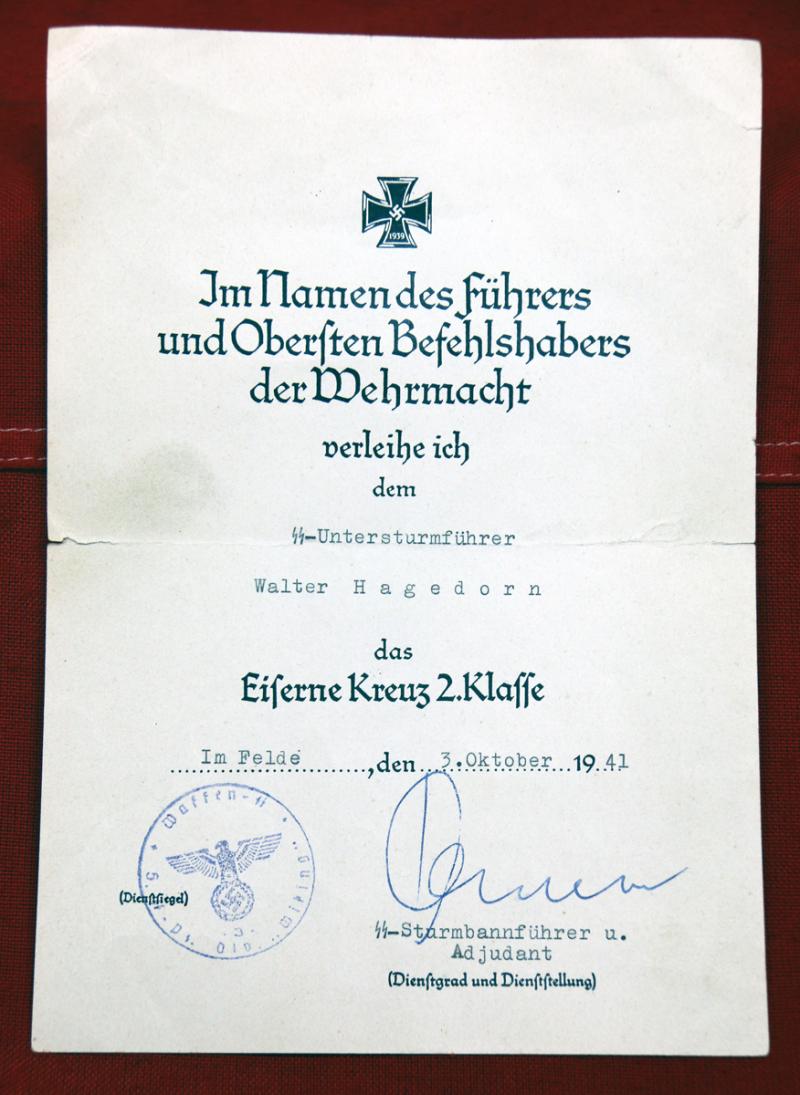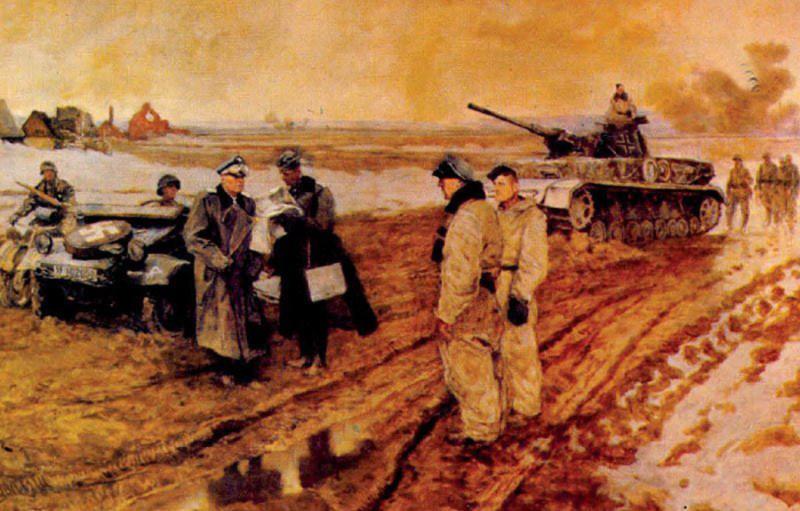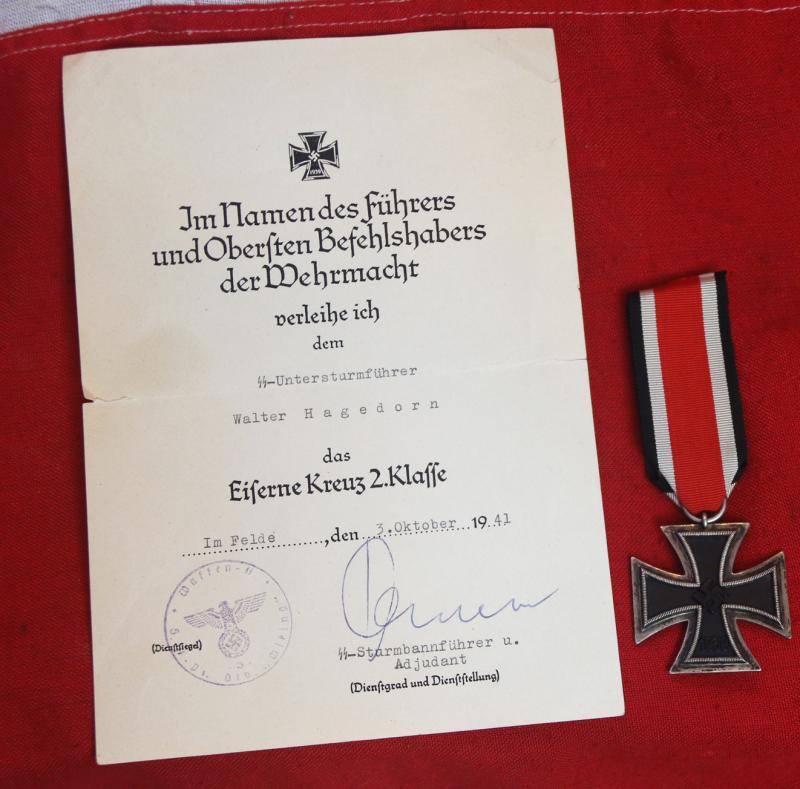5th SS Panzer Division 'Wiking' Iron Cross Second Class & Citation. Issued During Operation Barbarossa in October 1941,Signed by SS-Sturmbannfuhrer Adjudant for SS-Obergruppenführer Felix Steiner
WW2 German Waffen-SS Iron Cross 2nd Class Award Citation, with Iron Cross IInd Class, awarded to SS-Untersturmfuhrer Walter Hagedorn on 3rd October 1941. With official stamp for the 5th SS-Panzer Division “Wiking”. Signed by SS-Sturmbannfuhrer to the bottom. Good condition.
The Wiking-Division was the first foreign volunteer division of the Waffen-SS.
The SS Division Wiking had its origins in an order by Heinrich Himmler of September 1940 to set up a division with ‘Germanic’ volunteers from Holland, Denmark, Norway and the Walloon’s of Belgium.
To provide an experienced cadre, the ‘Germania’ regiment was transferred from the SS Division Reich to back up the new volunteer regiments ‘Westland’ and ‘Nordland’.
Originally the new unit was called SS-Infanterie-Division (mot.) Germania, but this led to constant confusion with the regiment of the same name and on 20 December the final name Wiking (Viking) was given.
Commander of the new division became Signed by SS-Sturmbannfuhrer , a respected former army officer. In February 1941, the newly formed Finnish Volunteer Unit was incorporated to the Wiking Division as the ‘Finnish Volunteer Battalion of the Waffen-SS’.
Several weeks of intensive training at Heuberg followed before the division was declared fit for action at the end of April 1941.
In mid-May, the division moved to West Poland to be deployed for the Operation Barbarossa. The SS-Division Wiking was part of the III Panzer Corps of the Army Group South.
About half of the division’s soldiers in June 1941 were volunteers from Belgium, Holland, Denmark, Norway, Iceland, Finland, the former Baltic States and other European countries. Some of them had already fought against the Red Army on the Finnish side during the Winter War of 1939-40.
The SS Division Wiking saw its first combat action in Russia in the area of Tarnopol. By August 1941 it had reached Uman, where it was part of the forces that closed the great pocket in which the Germans captured over 100,000 Russians.
Together with the Hermann Goering Division of the Luftwaffe, the Wiking Division stood in battle at Korzun and crossed the Dnieper until 21 August.
After the capitulation of Germany, Steiner was imprisoned and investigated for war crimes. He faced charges at the Nuremberg Trials, but they were dropped and he was released in 1948. In 1953, Steiner was recruited by the U.S. Central Intelligence Agency to found the Gesellschaft für Wehrkunde. As usual the medal is unnamed as issued, as is normal for all Iron Cross medals, of all classes.
Code: 24586









